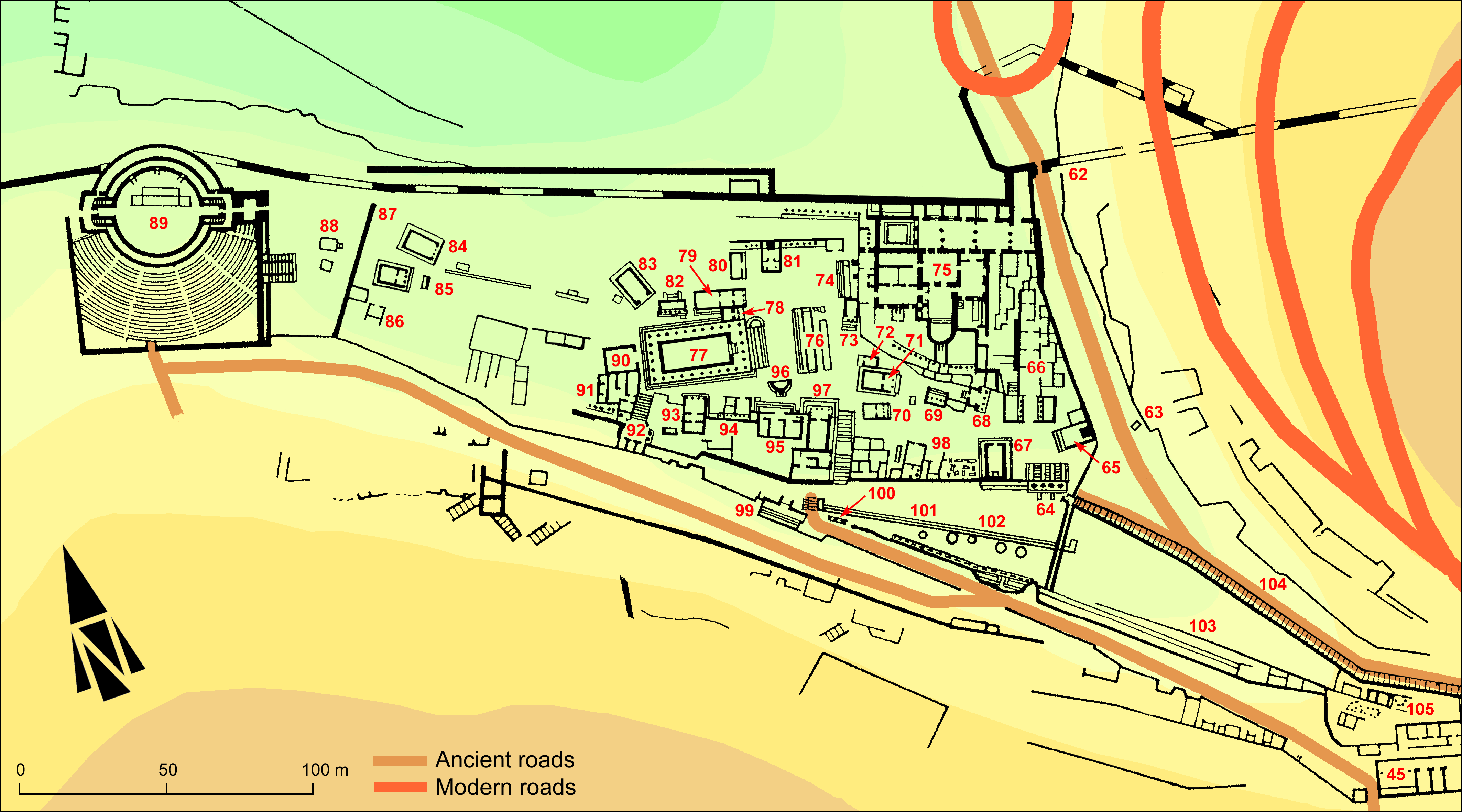EpiDoc XML:
IGCyr1045002
Trismegistos ID:
738567
Source description
Support: White marble base complete when discovered (w: 0.29 × h: 0.135 × d: 0.195); the base was later broken off on the face, the width of which being reduced to 0.195; the lost fragment was kept independently (w: 0.094 × h: 0.115 × d: 0.024).
Layout: Inscribed in four lines on the face.
Letters: Careful letters (0.011) without serifs; alpha with low bar, slightly dissymatrical nu, xi with three independant bars, smaller omicron and omega, slanting sigma; three dots as interpunction.
Date: First half of the fourth century BC (lettering, context).
Findspot: Found by Pernier in September 1930 at Cyrene ➚: Sanctuary of Apollo, in a room between the Fountain of Philothales and the retaining wall of the Upper Terrace.
Place of origin: Plausibly from the area of the findspot and anyway from the Sanctuary of Apollo.
Last recorded location: Fragment b was seen by D. Morelli in 1960 in Shahat: Cyrene Museum. The base without fragment b was seen by Dobias-Lalou in 1976 in Shahat: Cyrene Museum, in a backroom of the Ancient Sculpture Museum, at the time already closed to the public.
Text constituted from: Transcription from stone, Pernier's archive and Morelli's partial edition (CDL).
Bibliography
Fragment b only: Morelli in SECir, 251 (no image), whence IGCyr 104500 ➚; enhanced in this second edition (see commentary).
Text
Apparatus
French translation
Kudilea fille de Theutimos, épouse de Péan, a consacré à Apollon au titre de la dîme.
English translation
Kydilea daughter of Theutimos wife of Paean dedicated to Apollo as a tithe.
Italian translation
Kydilea figlia di Theutimos sposa di Peana ha dedicato ad Apollo come decima.
Commentary
In the first edition of IGCyr we published fragment b, known only from Morelli's transcription without illustration. Having seen the main part of the base in 1976, Dobias-Lalou did not succeed in finding it again during later visits to the Museum. In 2001, she met at Cyrene Enzo Catani, who was looking for unpublished stones mentioned in Pernier's notebooks of years 1925 to 1936. When seeing Pernier's copy, Dobias-Lalou was able to identify the stone, which she had once seen already broken off at right. However, she did not notice at the time that the fragment published by Morelli was the missing part of the same stone. Thanks to kind permission given by Catani, we are now able to reassemble the base in its former condition.
The general outline of the text is very clear and in alignement with numerous other dedications of a tithe for Apollo. The father's name of the dedicant is well attested with the dialectal form Θεύτιμος, whereas the daughter's name Κυδιλέα has here the Attic ending, against dialectal -λᾶ, which will be again fashionable in the Roman imperial period (see Dobias-Lalou 2000, p. 43). The formula ἁ τῶ Παιᾶνος is surprising and somewhat ambiguous. If Paian was her husband, it would be more usually expressed with γυνά. Another possibility might be that she was born daughter of Paian and later adopted by Theutimos. Such instances are not rare at Cyrene for men in Roman times. However, the formulation is always very clear: X son of Y 'and by birth (φύσει δέ' of Z. The former interpretation seems preferable.
The name Παιάν is a rare instance of a divine name given to a human being. Although not very usual, this happens, especially for divine epithets or secondary figures of main gods. Such was Paian in relation with Apollo. Especially in this inscription, the use of a tripunct at line 2 was perhaps intended as a clear separation of the human Paian from the divine Apollo.
CC BY-NC-SA 4.0 Deed Attribution-NonCommercial-ShareAlike 4.0 International License.
All citation, reuse or distribution of this work must contain a link back to DOI: https://doi.org/10.60760/unibo/igcyrgvcyr2 and the filename (IGCyr000000 or GVCyr000), as well as the year of consultation.





